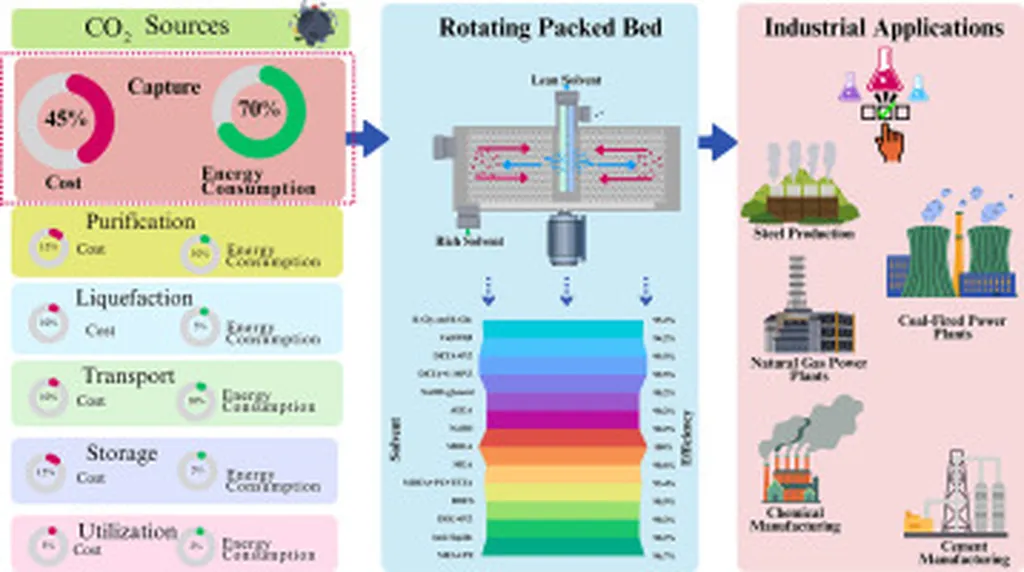In the relentless pursuit of curbing carbon emissions, scientists are delving deep into the molecular world to uncover innovative solutions. A recent study published in the journal *Green Chemical Engineering* offers a promising breakthrough in CO2 capture technology, with significant implications for the energy sector. Led by Haichuan Yin from the State Key Laboratory of Heavy Oil Processing at the China University of Petroleum in Beijing, the research combines experimental and computational approaches to shed light on the mechanisms behind CO2 absorption using a novel hybrid solvent.
The study focuses on a hybrid solvent composed of an ionic liquid, [N1111][Triz], and water. This combination has shown exceptional promise in capturing CO2 efficiently. “The [N1111][Triz]-H2O hybrid solvent exhibits remarkable CO2 absorption performance, with a capacity of 0.25 mol/mol,” Yin explains. This performance is attributed to a synergistic interplay of physical and chemical interactions within the solvent.
To understand the underlying mechanisms, the research team employed a multiscale approach, integrating thermodynamic analysis, phase equilibrium measurements, and molecular dynamics (MD) simulations. The thermodynamic analysis, which incorporated Henry’s law, the non-random two-liquid (NRTL) model for activity coefficients, the Redlich-Kwong equation, and reaction equilibrium constraints, accurately predicted the gas-liquid equilibrium behavior. The model achieved an impressive R2 of 99.1% and an average absolute relative deviation (AARD) of 7.76%, demonstrating its reliability in predicting the solvent’s behavior under various conditions.
MD simulations provided a dynamic view of the CO2 absorption process. The simulations revealed that CO2 molecules initially accumulate at the gas-liquid interface before gradually diffusing into the bulk phase. Increasing the concentration of [N1111][Triz] in the solvent enhances CO2 absorption capacity by providing more interaction sites, while water plays a crucial role in modulating interfacial behavior and diffusion kinetics.
The findings offer valuable insights into the absorption behaviors of [N1111][Triz]-H2O hybrid solvents for CO2, providing a theoretical foundation for the development of more efficient CO2 capture technologies. “This research highlights the potential of [N1111][Triz]-H2O hybrid solvents for industrial implementation,” Yin notes. The study not only advances our understanding of CO2 capture mechanisms but also paves the way for the development of next-generation solvents that can be tailored to specific industrial applications.
For the energy sector, this research holds significant promise. Efficient CO2 capture technologies are crucial for reducing emissions from power plants and industrial processes, contributing to global efforts to mitigate climate change. The insights gained from this study could lead to the development of more effective and economical CO2 capture systems, ultimately supporting the transition to a low-carbon economy.
As the world grapples with the challenges of climate change, innovative solutions like the one presented by Yin and his team offer a glimmer of hope. By unraveling the molecular intricacies of CO2 absorption, this research brings us one step closer to achieving sustainable and efficient carbon capture technologies, shaping the future of the energy sector.

